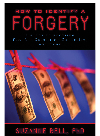

Most ebook files are in PDF format, so you can easily read them using various software such as Foxit Reader or directly on the Google Chrome browser.
Some ebook files are released by publishers in other formats such as .awz, .mobi, .epub, .fb2, etc. You may need to install specific software to read these formats on mobile/PC, such as Calibre.
Please read the tutorial at this link: https://ebookbell.com/faq
We offer FREE conversion to the popular formats you request; however, this may take some time. Therefore, right after payment, please email us, and we will try to provide the service as quickly as possible.
For some exceptional file formats or broken links (if any), please refrain from opening any disputes. Instead, email us first, and we will try to assist within a maximum of 6 hours.
EbookBell Team

4.7
86 reviews"A fascinating introduction to how scientists identify fraudulent copies, from signatures to oil paintings." —BooklistFakes and counterfeits have existed since ancient times; and while the methods of forgery have surely advanced, so has the science necessary to identify them. Currency, art, and historical artifacts are only a few of the objects commonly forged; and scientists in forensic laboratories throughout the world work alongside artists, museums, linguists, and historians to authenticate these items. How to Identify a Forgery investigates how modern computers, printers, and scanners have presented new challenges for scientists and how objects suspected of being faked, forged, or fraudulent are examined forensically. How to Identify a Forgery contains information on: